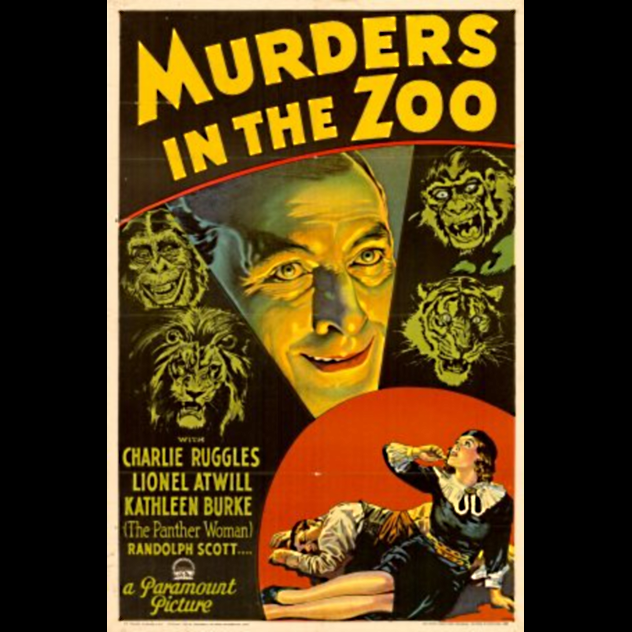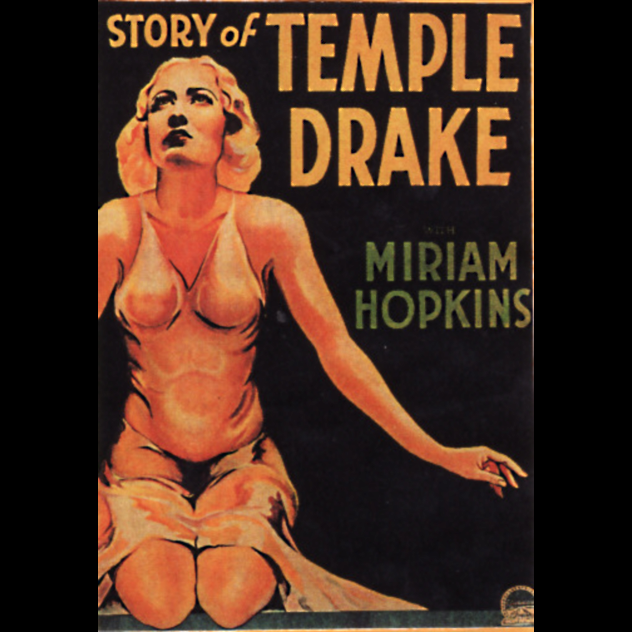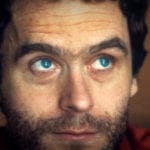 Music
Music  Music
Music  History
History 10 Less Than Jolly Events That Occurred on December 25
 Weird Stuff
Weird Stuff 10 Funny Ways That Researchers Overthink Christmas
 Politics
Politics 10 Political Scandals That Sent Crowds Into the Streets
 Weird Stuff
Weird Stuff Ten Bizarre Facts About The Doge Meme
 Our World
Our World 10 Ways Your Christmas Tree Is More Lit Than You Think
 Movies and TV
Movies and TV The 10 Coolest Stars to Set Sail on The Love Boat
 History
History 10 Things You Didn’t Know About the American National Anthem
 Technology
Technology Top 10 Everyday Tech Buzzwords That Hide a Darker Past
 Humans
Humans 10 Everyday Human Behaviors That Are Actually Survival Instincts
 Music
Music 10 Surprising Origin Stories of Your Favorite Holiday Songs
 History
History 10 Less Than Jolly Events That Occurred on December 25
 Weird Stuff
Weird Stuff 10 Funny Ways That Researchers Overthink Christmas
Who's Behind Listverse?

Jamie Frater
Head Editor
Jamie founded Listverse due to an insatiable desire to share fascinating, obscure, and bizarre facts. He has been a guest speaker on numerous national radio and television stations and is a five time published author.
More About Us Politics
Politics 10 Political Scandals That Sent Crowds Into the Streets
 Weird Stuff
Weird Stuff Ten Bizarre Facts About The Doge Meme
 Our World
Our World 10 Ways Your Christmas Tree Is More Lit Than You Think
 Movies and TV
Movies and TV The 10 Coolest Stars to Set Sail on The Love Boat
 History
History 10 Things You Didn’t Know About the American National Anthem
 Technology
Technology Top 10 Everyday Tech Buzzwords That Hide a Darker Past
 Humans
Humans 10 Everyday Human Behaviors That Are Actually Survival Instincts
10 Shocking Films From The Early Days Of Hollywood
Despite what you might think, our grandparents (or great-grandparents) weren’t all prudes or blue-nosed moral crusaders. As evidence, Hollywood, from the silent era until the mid-1930s, often produced feature-length films that dealt explicitly with adult themes, such as premarital sex, criminality, drug abuse, and prostitution. On other occasions, filmmakers titillated audiences with graphic images that included nudity or gruesome acts of violence. Then, when sound was introduced, a whole slew of films and filmmakers tried to capitalize on the public’s interest in the criminal underworld that was created as a result of Prohibition by producing a series of brash and bullet-heavy “talkies” that glorified the exploits of gangsters, such as Paul Muni’s Antonio “Tony” Camonte in 1932’s Scarface.
For years, many civic-minded individuals considered Hollywood to be a bastion of sin, a sort of modern-day Babylon, because of such films. Furthering these stereotypes were real-life criminal cases that involved silver-screen celebrities such as Fatty Arbuckle, who was charged with manslaughter for the death of aspiring actress Virginia Rappe in 1921, and William Desmond Taylor, the director whose salacious 1922 murder created an entire subculture devoted to solving the complex case.
Finally, in 1934, Hollywood tried to rein itself in. Led by former Postmaster General Will Hays, who had earlier drafted up a list of 36 “Don’ts and Be Carefuls,” known more popularly as the “Hays Code,” the movie studios and their moguls began to enforce the Motion Picture Production Code. This strict set of rules dictated on-screen behavior until the late 1960s, when a new generation of filmmakers broke away from the old studio system and began making films that dealt with the interests of the counterculture—sex, drugs, radical politics, and, above all else, rock and roll.
The Motion Picture Production Code unintentionally created a revered film genre known as Pre-Code. From early gangster pictures to horror classics, Pre-Code films often carry a sense of mystery and danger because of later censorship. Often, modern audiences find Pre-Code films less than scandalous, but a select few can still manage to shock even the most cynical of moviegoers.
10 Island Of Lost Souls
1932
Based on H.G. Wells’s 1896 novel The Island of Dr. Moreau, Island of Lost Souls tells the story of Edward Parker (played by Richard Arlen), a shipwreck survivor who winds up being rescued by a freighter full of captured animals destined for a remote South Seas island. As it turns out, the island belongs to Dr. Moreau (played by Charles Laughton), a mad scientist interested in transforming jungle beasts into humans. Within no time, Parker becomes a prisoner on Moreau’s island and is forced to play a part in Dr. Moreau’s most nauseating plan—the successful consummation of sexual intercourse between a man and Lota (played by Kathleen Burke), a panther that Moreau has successfully turned into a beautiful woman.
When the film premiered, Wells apparently disliked the fact that director Erle C. Kenton and screenwriters Philip Wylie and Waldemar Young emphasized Dr. Moreau’s sexual perversity rather than the novel’s anti-vivisection attitude. That being said, Island of Lost Souls does in fact deal with the controversial issues of eugenics and torture, with Dr. Moreau’s dreaded operating room, called the “House of Pain,” where animals are either painfully transformed into semi-humans or discarded as failures doomed to a life of servitude, serving as the focal point of all evil on the island. Class issues also play a part in the film, and Island of Lost Souls provides an uncomfortable allegory with the warped racial science of the Nazis, as well as Wylie’s own notions of social Darwinism and the innate superiority of certain individuals.
Although the exact reasons were lost during World War II, the British Board of Film Censors banned Island of Lost Souls in 1933. Almost 20 years later, the film received an “X” rating and underwent several cuts in order to be shown to the general public. Finally, in 1996, it was restored to its original version and received a PG rating.
9 Murders In The Zoo
1933

Murders in the Zoo (1933) was considered notorious in its own time. Directed by A. Edward Sutherland and co-written by the acerbic Wylie, Murders in the Zoo is a shorter full-length film (it lasts just a few minutes over an hour) about an insanely jealous big-game hunter named Eric Gorman (played by horror stalwart Lionel Atwill) and the lengths he goes to in order to exact revenge. Gorman’s jealousy stems from his younger, more attractive wife Evelyn (played by Kathleen Burke) and the various men who pursue her. Viewers get a taste of Gorman’s rage in the very first scene when, while hunting exotic animals for an American zoo in French Indochina, Gorman pounces upon one of Evelyn’s lovers and literally sews his mouth shut. As if this weren’t bad enough, the now mute man dies after being mauled by a tiger.
Once back on American soil, Gorman’s attacks continue unabated, but instead of relying on natural predators, he uses an ingenious murder mechanism that dispenses green mamba venom once it makes contact with skin. Ultimately, Gorman is revealed to be a serial killer, and while trying to evade authorities within the municipal zoo, he suffocates to death when he accidentally locks himself in with a boa constrictor.
Atwill’s performance in Murders in the Zoo earned him the title of “The MENTAL Lon Chaney” from the editors of Motion Picture Magazine, but the film itself was not a hit with censors, who shivered at all of the on-screen brutality. Even today, the film remains disarmingly grisly, even if viewed for its animal cruelty alone.
8 Ingagi
1930

King Kong is rightfully considered one to be of Hollywood’s greatest creations. Grand in scope and beautiful in execution, King Kong is to many the quintessential Hollywood film. Ingagi, which predates King Kong by three years, is almost the exact opposite. Sometimes referred to as an early example of the “found footage” motif, Ingagi purports to be a documentary about the African travels of Sir Hubert Winstead. While navigating the “Dark Continent,” Winstead comes across many fabulous creatures, such as the Tortadillo. More shocking is the fact that Winstead finds an isolated tribe of women who not only worship gorillas, but who also engage in carnal acts with the large primates.
Obviously, Ingagi is not a real documentary. It is a poorly disguised hoax, with the Tortadillo being a leopard turtle sporting wings and a tail that had been glued on. Although Ingagi does use actual footage taken from an earlier documentary, most of the film was shot in Los Angeles on back lots that were more or less commandeered by Congo Pictures, an independent outfit run by Nat Spitzer. Because of this, Ingagi is a chaotic mess that doesn’t even try to synch up stock footage with its own actors and scenarios.
Despite this, Ingagi was one of the highest-grossing films during the Depression. Audiences flocked to see the film’s final minutes, which feature naked African “ape women,” who were actually white actresses in heavy makeup, being ritually sacrificed to a gorilla. The film’s poster left little room for doubt that its producers wanted to exploit the erotic aspects of this sacrifice to the hilt.
7 Murders In The Rue Morgue
1932
The commingling of ape and human was all the rage in the early 1930s. Fed by ethnographic documentaries and newsreels about safaris in Africa and Asia, audiences just couldn’t get enough of seeing muscular, usually aggressive simians on the silver screen. Given this and the horror boom that came in the wake of the combined success of Universal’s Dracula and Frankenstein (both released in 1931), it’s no surprise that monster movies would explicitly feature gorillas, chimpanzees, and the occasional orangutan as villains. Murders in the Rue Morgue (1932), which stars Bela Lugosi as the mad scientist Dr. Mirakle, is a film that does just that.
Loosely based on Edgar Allan Poe’s short story of the same name, Murders in the Rue Morgue places Dr. Mirakle in the role of an extreme proponent of Darwinian evolution, whose “great experiment” is intended to once and for all prove humanity’s “kinship with the ape.” Mirakle’s experiment involves using a syringe to inject ape blood into the veins of his captured victims. At first, Dr. Mirakle uses a prostitute before deciding to search for a virgin woman in order to somehow create a half-human, half-ape bride for his own ape, Erik. Like his earlier turn as Count Dracula, Lugosi’s Mirakle is a sort of sexual deviant who relies upon blood transfusions in order to achieve his ends. In other instances, Dr. Mirakle engages in senseless acts of violence and even moments of sacrilege, such as the near-crucifixion and implied worship of a dead streetwalker.
In 1932, such stuff was considered too hot for younger audiences, and the Washington Post chided the film as a tribute to “mass morbidity” and an appeal to perverts. Censors took their scissors to the film as well, reducing the run time to a single hour in order to get rid of the initial cut’s more provocative scenes.
6 Maniac
1934
Also released under the title of Sex Maniac, Dwain Esper’s Maniac is one of the most well-known exploitation films of the Pre-Code era. Using the language of popular science, Esper’s film attempts to examine the psychosis of a criminal mind, or in this case, the mind of a sex-obsessed criminal. Maniac even quotes the “Director of the Chicago Institute of Research and Diagnosis,” Dr. William S. Sadler, MD, in order to give the film’s depiction of insanity an air of legitimacy.
When not trying to pass itself off as pseudo-documentary, Maniac fills up its reels with images of women lounging around in their underwear or, in some instances, wearing nothing at all. While at times, these moments come across as unintentionally hilarious, Maniac is actually a very disturbing film that frequently mixes sex and violence. Drawing inspiration from the tales of Edgar Allan Poe, the film is a story about a mentally deranged vaudeville actor who murders his boss (who was also a mad scientist obsessed with reviving the dead) after seeing the corpse of a beautiful young woman who committed suicide. From here, Maniac goes further and further into all-out exploitation, featuring a truly disturbing rape scene that shows bare breasts and a cringeworthy moment in which the crazed actor ingests an eyeball that had recently been taken from a living house cat.
After completing Maniac, Esper would later go on to direct the anti-marijuana exploitation film Marihuana, which was released not long before the more famous Reefer Madness, which Esper helped to produce.
5 Safe In Hell
1931
Sex, more than violence, helped to create the Hays Code. Safe in Hell, a film that features a prostitute accused of murder as its main protagonist, was a film tailor-made to irk the self-appointed censors in Hollywood. Famous for a scene that displays the bare legs of actress Dorothy Mackaill, Safe in Hell takes its title from prostitute Gilda Karlson’s inability to escape the lecherous advances of the men around her. From New York to a remote tropical island, Karlson is threatened with rape at almost every turn. Therefore, only death offers her any sort of respite.
Although director William Wellman added touches of slapstick humor and light romantic comedy to Houston Branch’s original stage play, Safe in Hell remains a lurid portrayal of lust, desperation, and sin. Even Karlson’s eventual conviction at the end of the film was not enough for those moral crusaders who disliked Mackaill’s portrayal of a “fallen woman” as tough and independent. Unfortunately, Hollywood’s rush to repeat the success of Safe in Hell with other films featuring hard-boiled females (many of whom were also prostitutes) only helped to further the cause of the Motion Picture Production Code, which attempted to reinforce the very same taboos that Karlson rails against in Safe in Hell.
4 Night Nurse
1931
Also directed by Wellman, Night Nurse is yet another sordid tale involving murder and a working girl. However, this time around, the female lead (played by Barbara Stanwyck) is more angel than devil, as she tries to rescue two wealthy children from their alcoholic mother Mrs. Ritchey (played by Charlotte Merriam) and a plot to starve them to death in order to seize their trust fund money. One of the killers, Nick the chauffeur, is played by none other than Clark Gable, who was just a few years away from becoming an international heartthrob.
In an attempt to show the raw realities of working-class life, Night Nurse occasionally dips into outright voyeurism, most notably in a scene where nurses Stanwyck and Joan Blondell undress in front of each other while casually discussing the best ways to turn a profit as a private nurse. Blondell’s character in particular epitomizes the swaggering female of the Pre-Code era with her penchant for chewing bubble gum (something that was frowned upon by polite society) and making the type of wisecracks that were usually reserved for tough-talking male characters.
Unlike the assertive yet kindhearted nurses, Merriam’s Mrs. Ritchey is a depiction of alcohol-infused amorality, for the drunken socialite prefers to continue a nonstop party rather than care for her own sick children. Compounding the irresponsibility of Mrs. Ritchey is the wickedness of Nick and Dr. Milton Ranger (played by Ralf Harolde), two characters who seem ripped from the true crime tabloids that were incredibly popular during the Great Depression.
The attempted murder of Mrs. Ritchey’s children, along with the film’s entirely cynical portrayal of the medical profession, helped Night Nurse to earn comparisons with another controversial Wellman film—1931’s The Public Enemy. According to reviewers, both films contained an “air of repellent fascination” and an engagement with characters who lived outside of the law and outside the boundaries of traditional morality.
3 The Story Of Temple Drake
1933

Films based on controversial novels are bound to cause a stir even before production wraps up. In the case of The Story of Temple Drake, the source material—William Faulkner’s 1931 novel Sanctuary—pretty much guaranteed a backlash, for stories about rape frequently illicit negative emotions. In short, The Story of Temple Drake describes the tortured existence of Temple Drake (played by Miriam Hokins), a promiscuous Southern girl and the daughter of a Mississippi judge who is kidnapped, raped, and forced into prostitution by a backwoods gangster named Trigger (played by Jack La Rue). Later, in self-defense, Temple kills Trigger before fleeing back to the relative safety of her family’s home.
Although it has all the makings of a moralistic revenge tale, The Story of Temple Drake, which ends with Temple confessing to Trigger’s murder after being prompted by an idealistic young lawyer, actually sees Temple admitting that she enjoyed the rape. While The Story of Temple Drake is in reality somewhat cheerier than Faulkner’s novel (Sanctuary ends with the hanging of an innocent man and the complete spiritual defeat of the well-meaning lawyer Horace Benbow), this did not stop Will Hays from personally placing editorial pressure on the heads of Paramount Pictures. Because of this, and the fact that several cities in the US banned the film outright, The Story of Temple Drake, more than almost any other film, helped to inspire a more active Hays Code as Hollywood’s chief engine of censorship.
2 Doctor X
1932
While not one of the most original horror films of the early 1930s, Doctor X was one of the most visually unique. Using a two-strip Technicolor process that intentionally gave each image a green tint, Doctor X terrified audiences with weird imagery and a frightening villain. Thematically, the film also provided plenty of scares with a screenplay written by Robert Tasker and Earl Baldwin that includes examples of cannibalism and murder.
Set in a gloomy-looking New York, Doctor X details the exploits of the “Moon Killer,” a raving madman who has been leaving half-eaten bodies all across the city for months. Led by the stereotypically hard-boiled news reporter Lee Taylor (played by Lee Tracy), the investigation begins to focus on Dr. Xavier (played by Lionel Atwill), a mysterious doctor who runs a medical academy alongside his beautiful daughter (played by Fay Wray, who would go on to play the female lead in King Kong just one year later). Initially, Dr. Xavier helps the police with their case, but after one of the murder weapons is traced back to his institution, he immediately becomes the prime suspect.
In the end, the real “Moon Killer” is revealed to be yet another mad scientist who is obsessed with pushing the boundaries of acceptable experimentation. In this case, he carries out his murders in order to collect living samples of human skin, tissue, and bone in order to manufacture something he calls “synthetic skin.”
Like other American horror movies during the Pre-Code era, Doctor X was heavily edited by the British Board of Film Censors. Back home, it was treated with lighter gloves because of a lack of overt sexuality in the storyline.
1 Red-Headed Woman
1932
While other films tiptoed around sex or tried to disguise sex talk with euphemistic dialogue, Jack Conway’s Red-Headed Woman is all about sex and is surprisingly frank in its portrayal of a woman who uses sex and her good looks in order to get what she wants. As a result, Jean Harlow’s Lil Andrews breaks up a marriage, engages in multiple instances of casual sex, and even tries to kill one of her own two-timing lovers.
Unlike other Pre-Code films which sought to punish “fallen women” for their indiscretions, Red-Headed Woman, which was scripted by both F. Scott Fitzgerald and Anita Loos, the author of Gentlemen Prefer Blondes, ends with an unrepentant Lil riding off in a limousine. In this way, Lil is more comparable to the era’s cinematic gangsters, who, like Lil, justify their amoral actions by seeing them as the only way to escape a lifetime confined in a low socioeconomic status.
As would be expected, Hollywood censors were less than enthusiastic about Red-Headed Woman. The film, which contains a brief nude scene, underwent 17 different cuts before it could be fully released in the United States. Just two years later, the new, more stringent Hays Code saw to it that a film like Red-Headed Woman couldn’t even be made in the first place.
Benjamin Welton is a freelance journalist based in New England. His work has appeared in The Atlantic, VICE, The Atomic Elbow, Crime Magazine, and others. He currently blogs at literarytrebuchet.blogspot.com.








